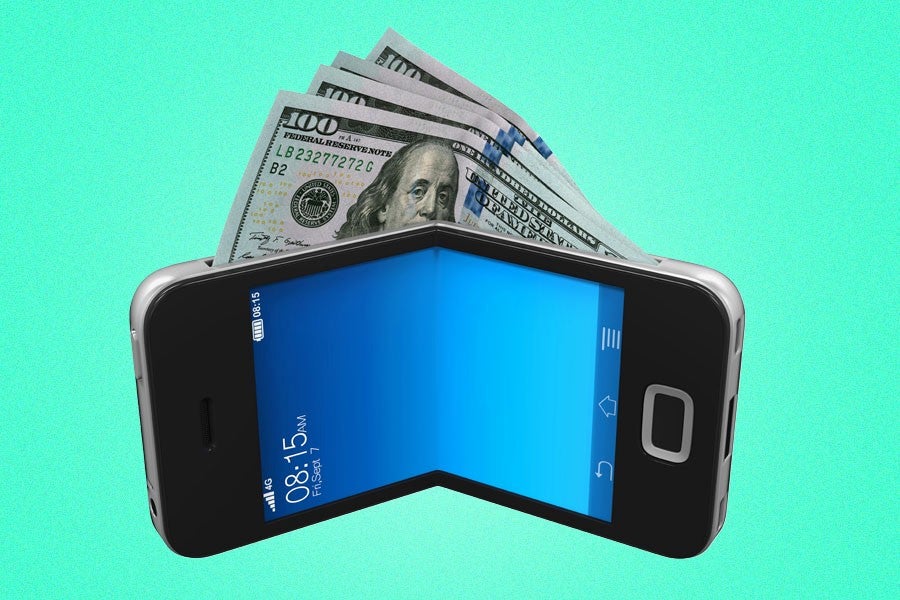I remember a time when my phone was capable of just three things: Calling, texting and costing my parents $50 every time I accidentally logged onto the not-yet-proficient mobile internet. Now, my phone has essentially become my wallet, which in turn has basically become a graveyard for my soon-to-be obsolete credit cards and a bunch of AMC Theaters gift cards that my aunt sends me every so often.
Soon, I expect pretty much everything in my pockets to become digitized — probably even the lint.
Here’s how it’s going to happen.
Health Insurance Cards
You know what? You already don’t need to carry that plastic card at all! Courtney Jay, deputy director of media relations for America’s Health Insurance Plans, told the American Academy of Family Physicians News that several insurers were embracing digital health insurance cards in 2016. “These approaches allow consumers to have ready access to their ID card information via an application on their phone — which includes the same information that is on their printed ID cards today,” she said. Now if only I could Venmo my co-pay.
Driver’s Licenses
Digital security giant Gemalto is currently working with many states (e.g., Tennessee, Arizona, Utah, Louisiana, California, Illinois and Arkansas) to develop digital driver’s licenses, which will display all the familiar personal information — name, address and date of birth, accompanied by a headshot (which may or may not come in the form of a short video clip, which sounds awesomely ridiculous). The government has already moved forward with pilot programs in Colorado, Idaho, Maryland, Washington D.C. and Wyoming — and the Department of Transportation hopes to makes digital driver’s licenses public in 2018. So prepare for a massive surge in fake IDs.
Social Security Cards
We may never get digital Social Security cards, because Social Security numbers themselves may soon be obsolete. Late last year, White House cybersecurity coordinator Rob Joyce proposed the radical notion of replacing Social Security numbers with modern cryptographic identifiers. Estonia currently uses a system slightly similar this, where every citizen is issued a smartcard that can be used to securely identify the cardholder. Of course, it would be quite the headache to overhaul the current Social Security system in America, since we have a comparatively massive populace. But come on, anything’s better than that ratty, ancient piece of paper.
Car Keys
Gemalto also partnered with automotive supplier Valero in 2016 to launch a virtual car key system called Valeo InBlue. It essentially allows drivers to lock, unlock and start their car using their smartphone (so don’t lose it!). Here’s how it works:
While their system hasn’t gained a whole lot of traction, BMW recently released a similar digital key, which also allows you to share the system with up to five other people (for instance, your partner could start the car even without you there — for better or worse). This feature will be available for BMW owners come July, and will perhaps help make digital car keys more of a thing.
House Keys
In 2013, home safety company Kwikset released the Kevo Smart Lock, which essentially turns your smartphone into a digital house key. Their app links your phone to the lock using Bluetooth technology and location services, allowing you to unlock the lock by simply tapping it with your finger (the app also allows you to create electronic keys for other people, so the whole family can get in on it). The Kevo lock also knows when you’re inside the house, meaning a random person walking down the street can’t simply tap the lock and enter while you’re sitting on the toilet (a very real fear of mine).
Lock veterans Yale and Schlage have also been hard at work promoting a keyless future — Schlage released a digital lock in 2015, and Yale is expected to release theirs sometime this year. When exactly such locks will become the norm isn’t totally clear, but hopefully, we can give up walking around like medieval dungeon masters in our lifetimes.
Money
Digital wallet services (Google Pay, Apple Pay and Samsung Pay) have been around for years now: Google Pay was first released in 2011. But while the public has been slow to accept them — only 2 percent of Americans used digital wallet services in 2015 — they’re now gaining more traction than ever: About a third of smartphone users will use mobile payments by 2019, according to a projection by eMarketer. It helps that more merchants are accepting this payment method: 36 percent of American merchants currently use it, and nearly 70 percent of merchants in a 2016 survey anticipated accepting digital wallet payments within five years.
Don’t expect cash to fully disappear anytime soon, though: The major downside of digital wallet services is that they can further disenfranchise low income people who lack access to bank accounts and the internet, so physical currency is still going to be necessary.
And also, how the hell else are we supposed to do cocaine?

